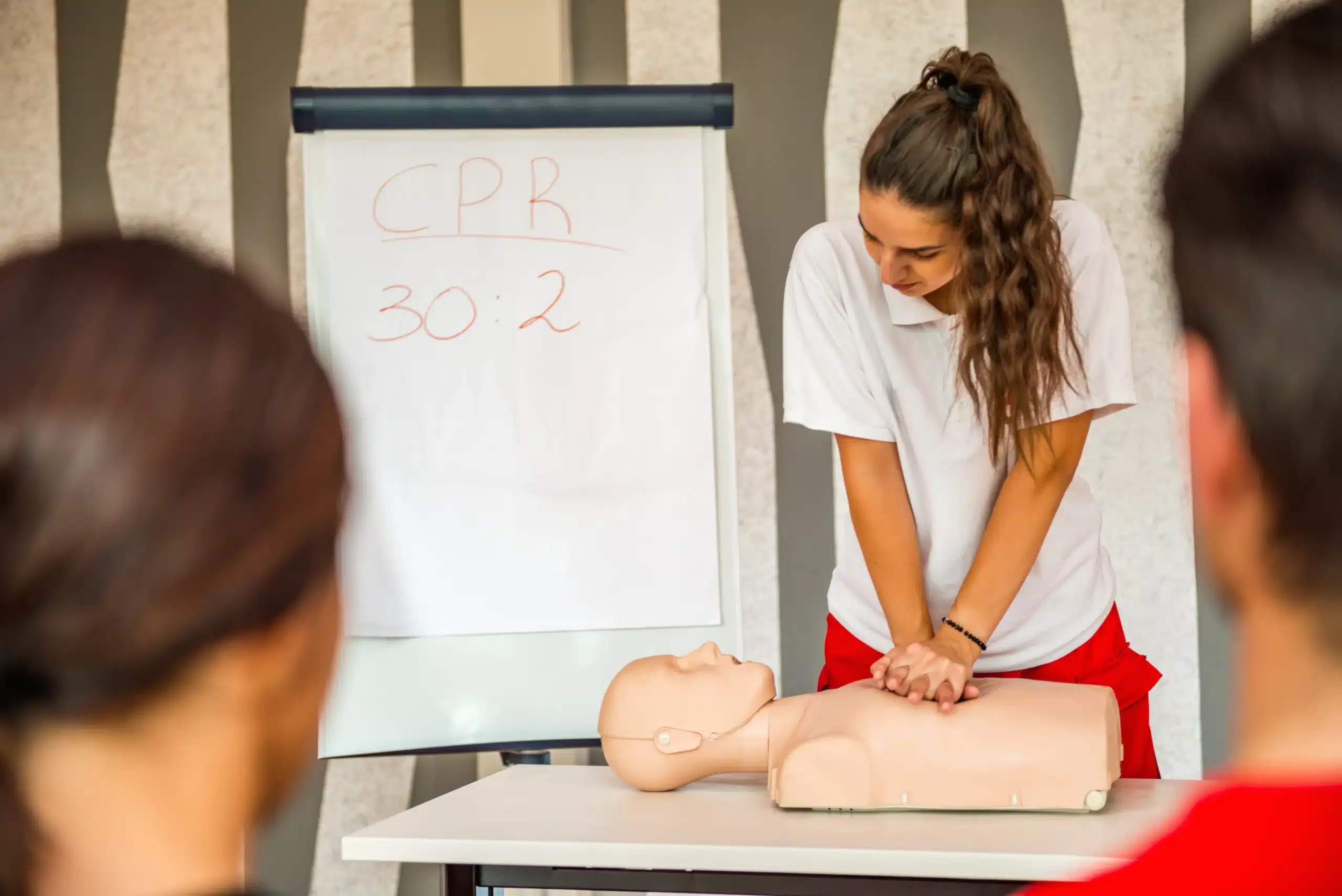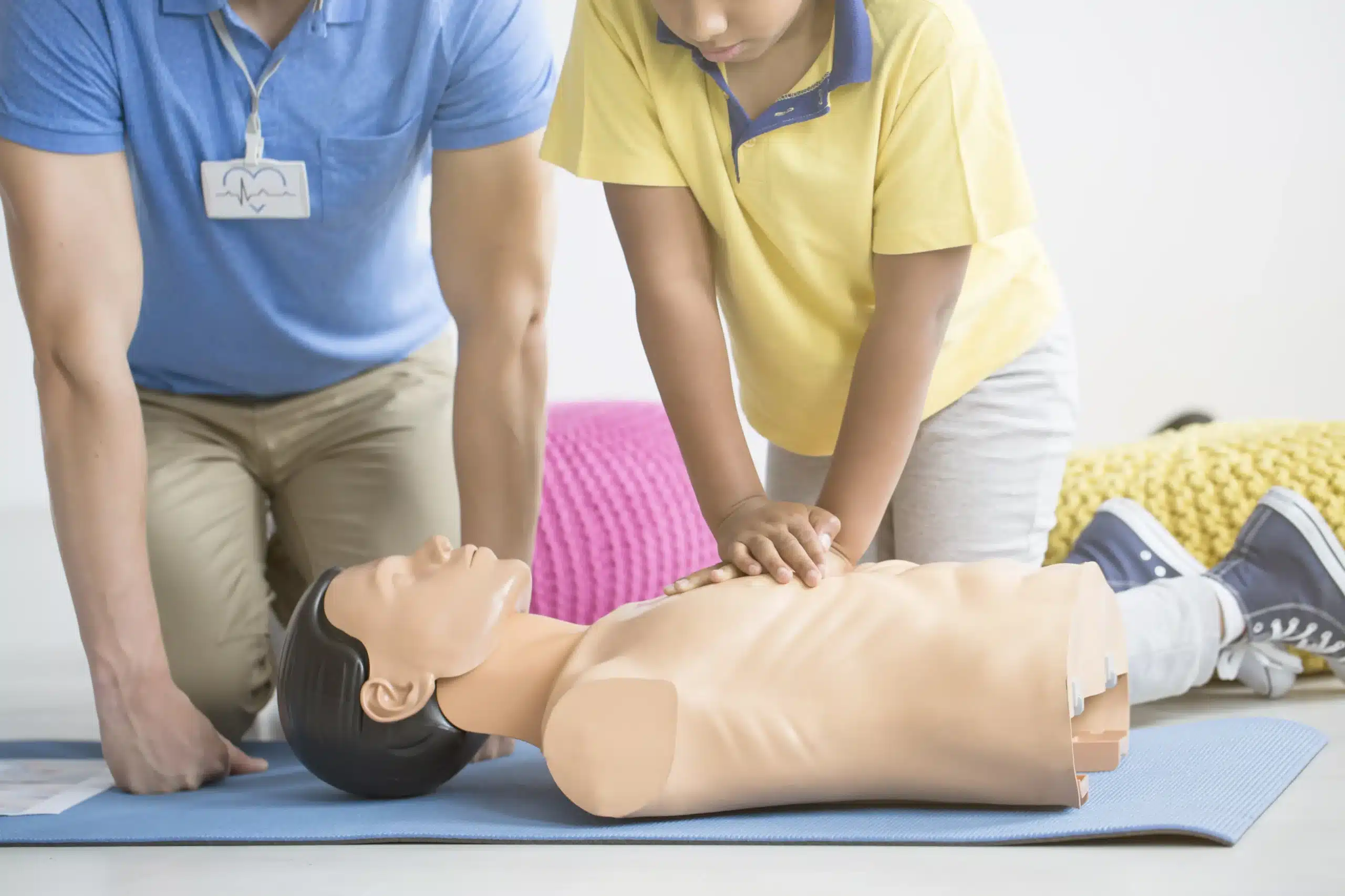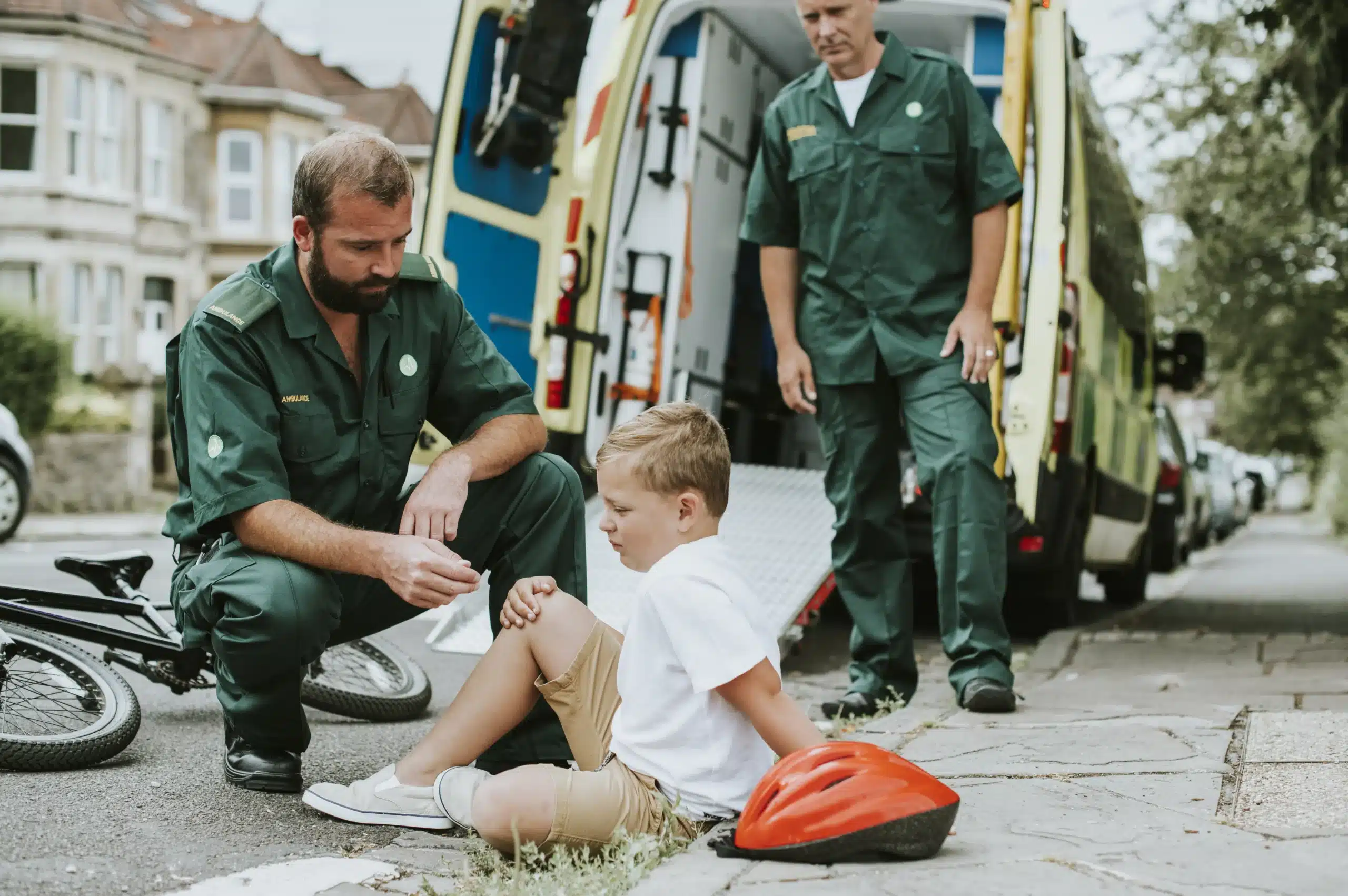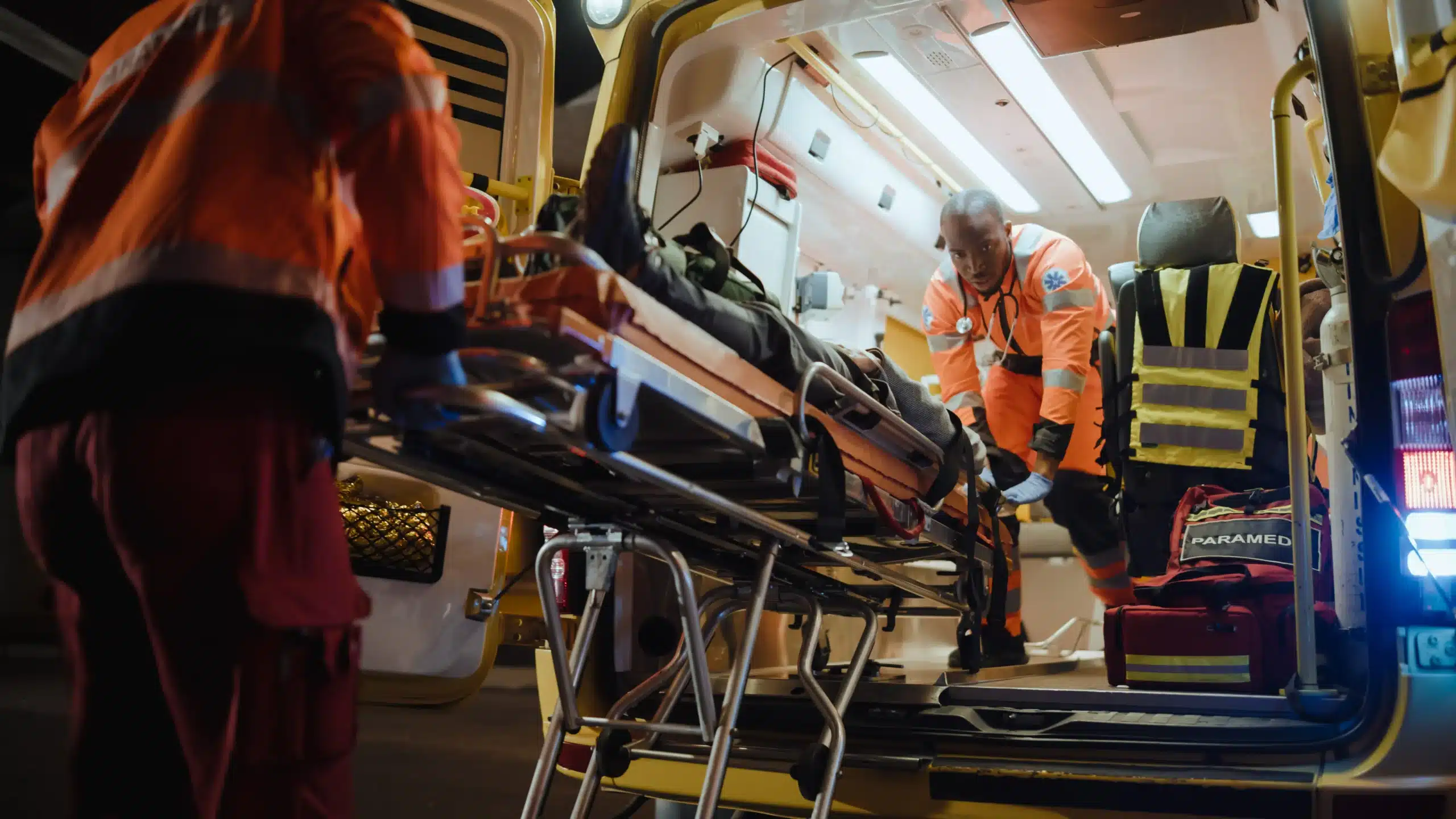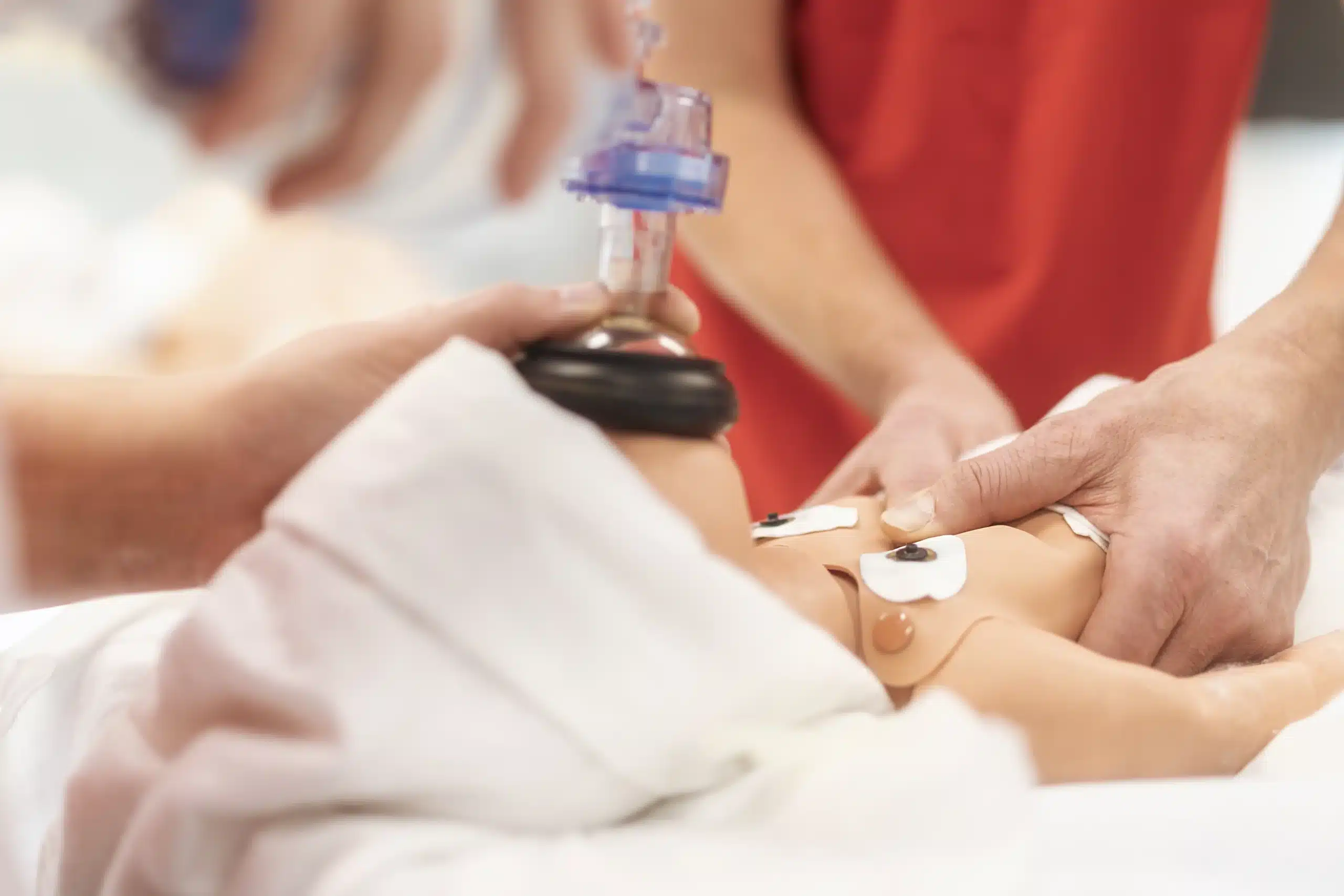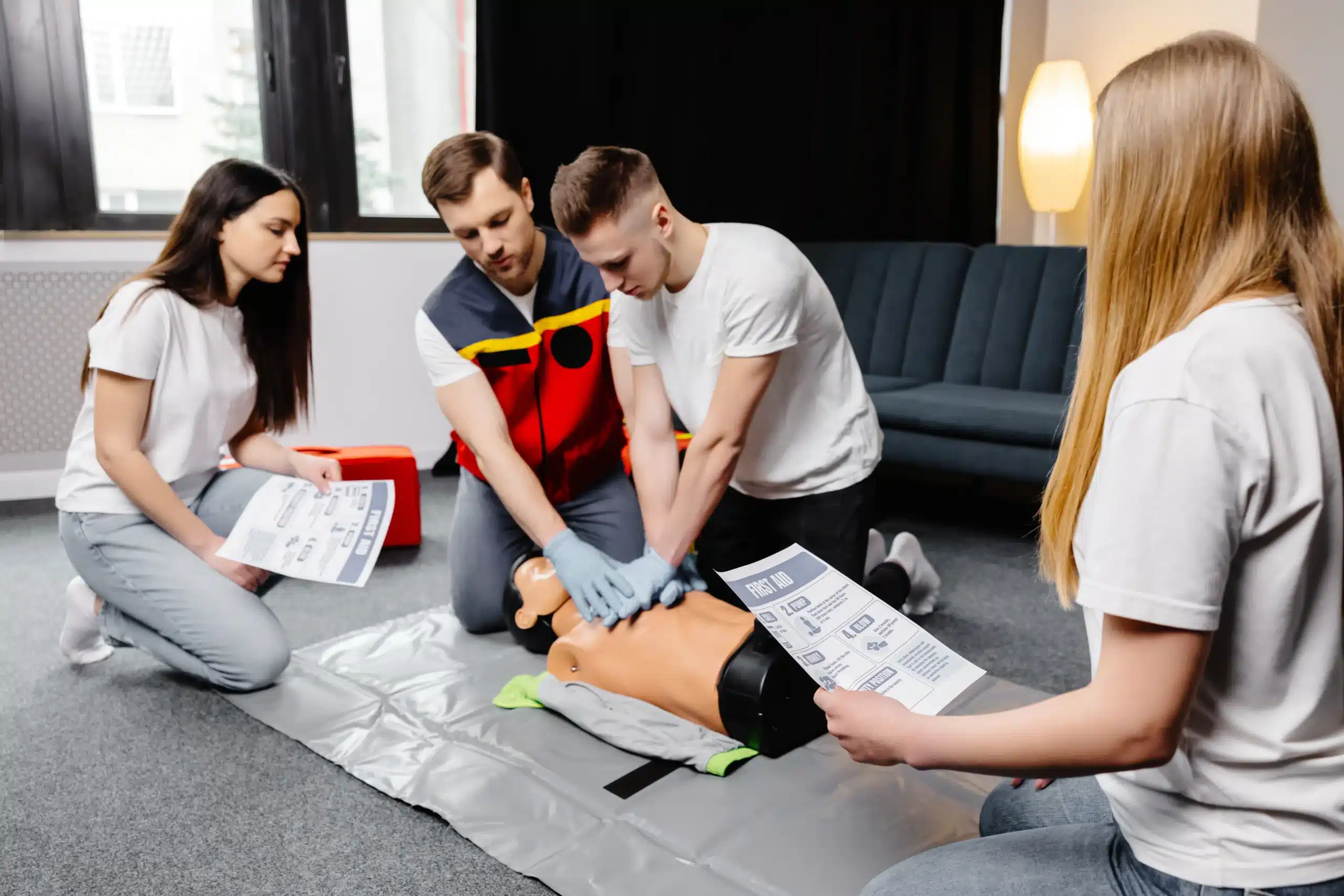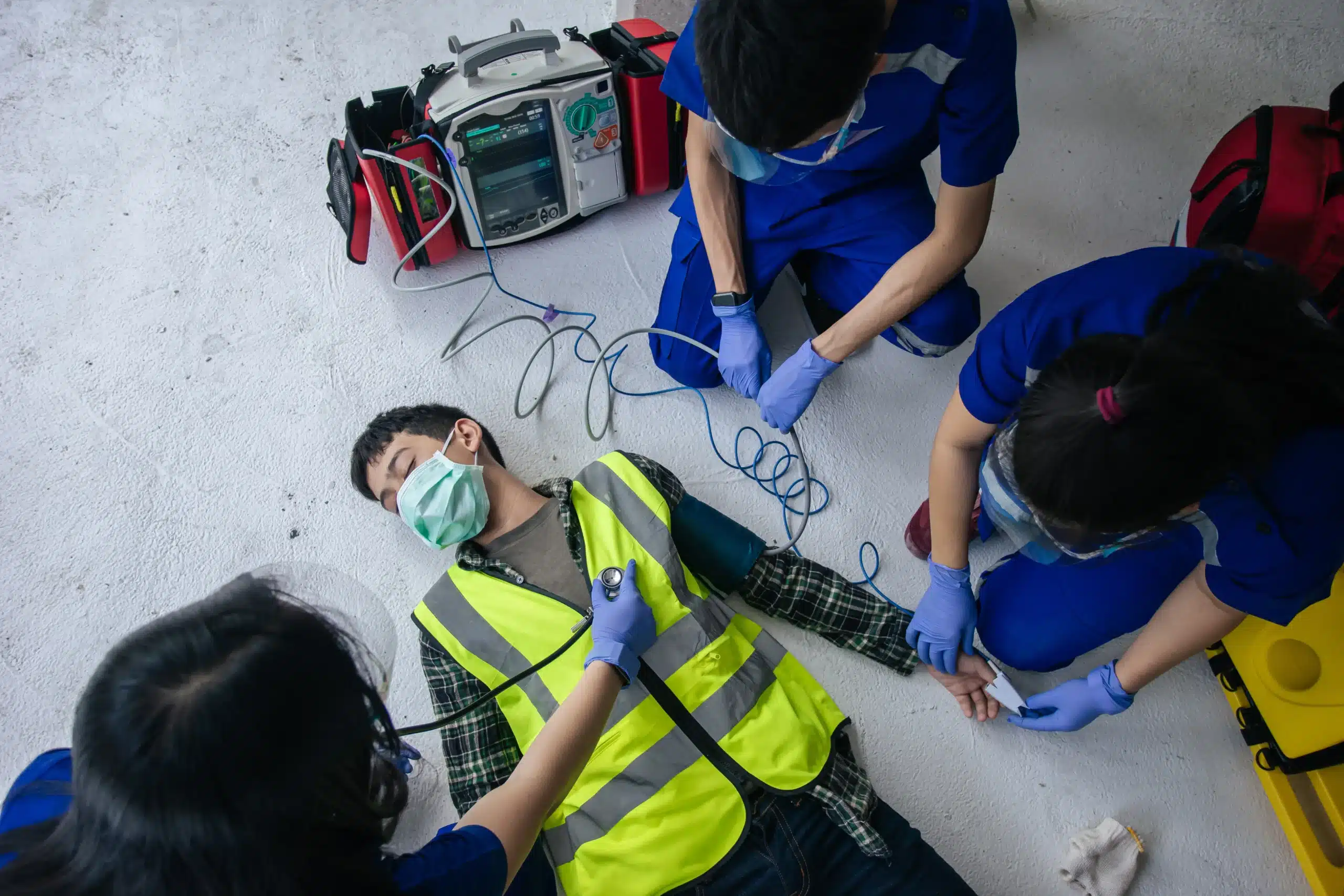Learning BLS, or Basic Life Support, can quite literally empower you to save a life. It’s about more than just certifications; it’s about equipping yourself with the confidence and skills to respond effectively in critical situations. This guide breaks down everything you need to know about BLS, from understanding its core components to finding “BLS classes near me” and choosing the right training program. Whether you’re a healthcare professional, a concerned citizen, or simply someone who wants to be prepared, this comprehensive guide will help you take the first step towards becoming a vital link in the chain of survival. We’ll explore the importance of BLS, the skills you’ll learn, how to find training near you, and what to expect during the course. Let’s get started.
Key Takeaways
- BLS is essential for everyone: From healthcare providers to everyday people, BLS training empowers you with life-saving skills, including CPR, AED use, and airway management. Find a course format—in-person, online, or blended—that works for you.
- Choose your BLS training wisely: Select an accredited provider, such as the American Heart Association, with experienced instructors and a good student-to-instructor ratio. Compare prices and ask about group discounts.
- Stay current with your BLS skills: Recertify every two years and pursue continuing education opportunities to maintain your proficiency and stay up-to-date on the latest guidelines. Consistent practice is key to confident and effective BLS performance.
What is BLS?
What BLS Is and Why It Matters
Basic Life Support (BLS) certification equips you with the skills to respond to life-threatening emergencies. It’s the foundation for saving lives, providing crucial care in those first few critical moments. BLS focuses on providing immediate support to someone experiencing cardiac arrest, respiratory distress, or an obstructed airway. Think of it as the first line of defense in a medical emergency. BLS certification is essential for healthcare providers, first responders, and anyone who wants to be prepared to help in a crisis. It emphasizes early intervention and high-quality CPR to improve survival rates. Learning BLS means you’re ready to step in when every second counts. For more information on BLS education and training, take a look at this resource. Our BLS certification courses are designed to meet the needs of both healthcare professionals and the general public.
Essential BLS Skills
BLS isn’t just about chest compressions; it covers a range of life-saving techniques. High-quality CPR is a cornerstone, ensuring effective blood circulation and oxygen delivery. BLS training also teaches you how to use an automated external defibrillator (AED), a device that can restore a normal heart rhythm. You’ll also learn essential airway management techniques to ensure the person can breathe. These skills combined provide a comprehensive approach to emergency care. Regular practice is key to maintaining proficiency, so remember to refresh your skills periodically. This article offers valuable tips for mastering and maintaining your BLS skills. At Morgan Hill CPR Classes, we cover all these essential skills and provide the hands-on practice you need to feel confident in an emergency. We also offer group discounts to make training more accessible.
Find BLS Classes Near You
Finding the right BLS class shouldn’t feel like searching for a needle in a haystack. Here’s how to find BLS classes near you:
Use Online Search Tools
Start with a simple online search. Use keywords like “BLS classes near me” or “BLS certification [your city]” to generate a list of potential training providers. Dedicated CPR training websites often have search tools that allow you to filter by location, date, and class format. Sites like Morgan Hill CPR Classes offer BLS classes that fit your schedule and location.
Check Local Healthcare Facilities and Training Centers
Hospitals, clinics, and dedicated training centers frequently offer BLS classes. Contacting these facilities directly or checking their websites can provide valuable information on upcoming courses. Many hospitals and clinics offer the American Heart Association’s RQI program for healthcare professionals seeking efficient skills maintenance. Morgan Hill CPR Classes caters to various groups, from healthcare providers to the general public.
Explore Community Colleges and Adult Education Programs
Community colleges and adult education programs are often overlooked resources for BLS training. These programs typically offer a range of healthcare-related courses, including BLS certification, at affordable prices. Check their course catalogs or websites for schedules and registration information. Consider this option if you prefer a structured learning environment. Safety Training Seminars offers a variety of AHA-certified courses, including BLS, ACLS, and PALS.
Top BLS Certification Providers
Finding the right BLS certification provider is key to receiving high-quality training. Several reputable organizations offer comprehensive BLS courses. Here’s a closer look at some of the top providers:
Morgan Hill CPR Classes
Morgan Hill CPR Classes offers a range of American Heart Association (AHA)-aligned certification courses, including BLS. They provide training for healthcare professionals and also offer standard BLS certification for the general public. If you’re a healthcare provider in Morgan Hill, San Jose, or Gilroy, look for a BLS course specifically designed for medical professionals, like the ones offered by Morgan Hill CPR Classes. They even have a low-price guarantee. For those looking to train with colleagues, check out their group discounts.
American Heart Association (AHA)
The AHA is a leading authority in resuscitation science. Their BLS Course provides the latest resuscitation science for improved patient outcomes. The course content includes realistic scenarios, simulations, and animations to help you visualize and practice essential BLS techniques.
American Red Cross
The American Red Cross is a well-known provider of health and safety training. Their BLS certification courses cater to healthcare professionals and first responders, offering comprehensive training in life-saving techniques. The Red Cross also provides BLS courses for the general public.
National Safety Council
The National Safety Council focuses on equipping individuals with the skills to respond effectively in emergencies. Their BLS training emphasizes hands-on practice and real-world scenarios. This practical approach helps students develop confidence and competence in performing BLS.
Local Hospitals and Medical Centers
Many local hospitals and medical centers offer BLS certification courses. These courses are often tailored for their staff and the surrounding community. Check with hospitals and medical centers in your area to see what BLS training options they offer. They can be a convenient and reputable source for BLS certification.
Choose the Right BLS Class Format
Finding the right BLS class format depends on your learning style, schedule, and workplace requirements. Let’s break down the pros and cons of each option so you can make the best choice.
In-Person Training
In-person BLS training offers a hands-on learning experience crucial for mastering these lifesaving skills. As Morgan Hill CPR Classes points out, BLS certification is valuable for a wide range of people, from healthcare providers and first responders to educators and the general public. The in-person format lets you interact directly with instructors, ask questions, and practice skills with immediate feedback. This direct interaction can significantly improve both your understanding and retention of the material. The American Heart Association highlights the benefits of realistic scenarios and simulations used in these courses, creating an immersive learning environment that prepares you for real-world emergencies.
Online BLS Courses
Online BLS courses offer unparalleled flexibility and convenience. You can learn at your own pace and fit the training around your schedule. Morgan Hill CPR Classes notes that the online portion of these courses, often administered through the American Heart Association, typically takes just 1–2 hours to complete. This format is perfect for busy professionals or anyone who has difficulty attending scheduled classes. However, the Red Cross points out an important consideration: online courses usually don’t include a hands-on skills assessment. This means they might not fulfill all workplace requirements, so check your employer’s guidelines before choosing this option.
Blended Learning
Blended learning combines the best of both worlds—the flexibility of online learning with the practical application of in-person skills sessions. The Red Cross explains that this format allows you to complete the theoretical coursework online at your convenience and then attend an in-person session for hands-on practice and skills assessment. The HeartCode BLS course, for example, uses this blended approach, ensuring you develop both the knowledge and practical skills necessary for effective BLS. This comprehensive approach makes blended learning a solid option for many.
Understand BLS Certification Costs
Knowing the cost of BLS certification is a practical first step. It helps you budget effectively and compare training options. Let’s break down the typical price range, additional fees to watch out for, and ways to save money.
Typical Price Range
BLS certification courses typically range from $70 to $100. This price usually covers the comprehensive training program, including the study materials, skills practice, and the certification exam. Remember that prices can vary based on location, the training provider, and the course format (in-person vs. online). For example, the HeartCode BLS course at Morgan Hill CPR Classes is priced at $120, encompassing the online portion, the skills test, and your official AHA BLS certification card. It’s always a good idea to compare pricing from a few different providers in your area.
Additional Fees
Keep an eye out for potential extra fees. These can include things like late cancellation or rescheduling fees. For instance, some training centers have a policy where you forfeit fees if you don’t cancel your course or don’t show up. There might also be separate fees for a skills check. Always double-check the pricing details to avoid surprises. Reading the fine print can save you money and frustration in the long run.
Low Price Guarantees and Group Discounts
One of the best ways to save on BLS certification is to look for low price guarantees and group discounts. Many providers offer these deals, especially for organizations training multiple employees. For example, at Morgan Hill CPR Classes, we offer a low price guarantee to ensure you’re getting the best value. Also, check for group discounts, which can significantly reduce the per-person cost. These discounts can be a great option for businesses or groups of friends getting certified together. Contacting providers directly to ask about potential discounts is always a smart move.
What to Expect in a BLS Class
So, you’ve signed up for a BLS class—congratulations! Knowing what to expect can help you feel prepared and confident. Here’s a breakdown of a typical BLS course:
Course Structure and Duration
BLS courses blend online learning with in-person skills practice and testing. At Morgan Hill CPR Classes, the HeartCode BLS course begins with an online component, typically taking one to two hours to complete. This self-paced portion covers essential concepts and procedures. The online portion costs $120, including the skills test and your official AHA BLS certification card. After finishing the online section, you’ll schedule an in-person skills session at our Morgan Hill location, allowing you to demonstrate your skills and receive personalized feedback from a certified instructor.
Hands-On Practice and Skills Assessments
The in-person skills session is where you’ll put your knowledge into action. Expect hands-on practice of core BLS skills like CPR, using an AED, and providing rescue breaths on manikins. The American Heart Association’s BLS Course uses realistic scenarios and simulations to prepare you for real-world emergencies. Your instructor will guide you through each skill, offer feedback, and answer any questions. This hands-on practice is crucial for building confidence and mastering the techniques.
Certification and Card Issuance
Once you’ve successfully completed both the online and in-person components, you’ll receive your AHA BLS Provider certification card. This nationally recognized certification is valid for two years. Keep your card accessible, as it verifies your BLS proficiency to employers and healthcare facilities.
Choose the Right BLS Provider
Finding the right BLS provider is just as important as choosing the right class format. Here’s what to consider:
Accreditation and Recognition
First things first, make sure your chosen provider is accredited by a recognized organization like the American Heart Association (AHA). For example, Morgan Hill CPR Classes offers a range of AHA-aligned certification courses, including BLS. This accreditation ensures the training meets industry standards and is widely accepted.
Instructor Qualifications
Look for instructors with real-world experience and certifications. Experienced instructors can offer practical insights and answer your questions, making your learning experience more valuable. A knowledgeable instructor can make all the difference in your confidence level.
Class Size and Student-to-Instructor Ratio
A smaller class size often means more personalized attention from the instructor. The AHA recommends a ratio of one instructor to six students for optimal learning. This ensures each student gets the support they need. If you learn best in a smaller group setting, ask about class size before registering. You can often find this information on the provider’s website or by giving them a call. Morgan Hill CPR Classes offers group discounts, so check if they have options that fit your needs.
Prepare for Your BLS Class
Getting ready for your BLS class involves a few key steps, from understanding the prerequisites to gathering your study materials and prepping for the course work. A little preparation beforehand can make a big difference in how smoothly your training goes.
Prerequisites
Most BLS classes don’t require formal prerequisites. However, if you’re a healthcare provider, look for a BLS course specifically designed for medical professionals, like the ones offered by Morgan Hill CPR Classes. These courses often cover advanced techniques and scenarios relevant to your field. Check with your employer or licensing board to see if they recommend a particular type of BLS course.
Study Materials and Pre-Course Work
Some BLS courses, like the HeartCode BLS option, use a blended learning approach. This means you’ll complete an online portion before attending an in-person skills session. The online portion, typically takes 1–2 hours. Make sure you carve out enough time to finish this before your in-person class. This online component often covers the cognitive information, leaving the in-person session for hands-on practice and skills assessment. Upon successful completion of the entire BLS course, you’ll receive your AHA BLS Provider certification card.
Tips for Success
A few simple strategies can help you succeed in your BLS class. First, review any pre-course materials thoroughly. This will give you a solid foundation for the in-person training. During the hands-on portion of the class, actively participate and ask questions. The instructors are there to help you master the skills. Finally, regularly practice your BLS skills even after you’ve completed the course. Regular practice is key to maintaining proficiency and confidence. You can also utilize online resources to stay updated with the latest BLS guidelines and techniques. Staying current ensures you’re always prepared to provide effective care. Consider refreshing your skills periodically by retaking the course or attending refresher workshops.
How BLS Training Impacts Healthcare Careers
BLS training is a cornerstone for many healthcare roles. Whether you’re a seasoned professional or just starting out, a current BLS certification shows you’re committed to patient safety and high-quality care. This commitment can open doors in several ways:
Career Advancement
BLS certification equips you with the skills to respond effectively in critical situations, making you a valuable asset in any healthcare setting. Many employers require BLS certification as a baseline qualification. Having this credential can give you a competitive edge when applying for jobs or promotions, showing potential employers you’re prepared to handle emergencies and prioritize patient well-being. For those already working in healthcare, maintaining your BLS certification can be key for career advancement.
Industry Compliance
The healthcare industry adheres to strict standards to ensure patient safety and quality care. BLS certification demonstrates compliance with these standards, reflecting the latest resuscitation science and best practices. Organizations like the American Heart Association (AHA) offer up-to-date BLS courses covering the most current guidelines and techniques. Maintaining your BLS certification keeps you aligned with industry expectations and can be crucial for maintaining licensure and accreditation.
Networking and Professional Development
BLS training provides opportunities to connect with other healthcare professionals and build your professional network. You’ll learn alongside colleagues, share experiences, and gain insights from instructors. These connections can be valuable for career growth and can lead to new opportunities. BLS training often involves teamwork and communication exercises, strengthening your interpersonal skills and enhancing your ability to collaborate effectively in a healthcare setting. Consider inviting members of your professional network to group BLS classes to further expand your connections.
Maintain Your BLS Certification
Keeping your BLS certification current is crucial for any healthcare professional or first responder. Knowing the renewal process and staying up-to-date on the latest guidelines ensures you’re always prepared to provide high-quality care.
Renewal Process
BLS certifications are typically valid for two years. To maintain your credentials, complete a recertification course before your current certification expires. Don’t let it lapse! Recertification courses are readily available, and you can often take them within 30 days of your expiration date. Check with your certifying organization, such as the American Heart Association, for specific guidelines. At Morgan Hill CPR Classes, we offer convenient BLS recertification courses to help you stay current.
Continuing Education
Even after renewing your certification, commit to ongoing learning. The field of healthcare is constantly evolving, so staying informed about the latest BLS guidelines and techniques is essential. BLS training emphasizes critical thinking and teamwork, adaptable to various emergency situations. Utilize online resources and continuing education courses to refine your skills and knowledge. This dedication to lifelong learning not only benefits your professional development but also ensures you’re providing the best possible care. Explore our resources on course preparation to get a head start.
Related Articles
- BLS Certification San Jose: Your Ultimate Guide – Morgan Hill CPR Classes
- BLS Renewal in Morgan Hill: A Essential Guide
- Basic Life Support in Gilroy: A Complete Guide
- BLS Certification in Morgan Hill: Your Complete Guide – Morgan Hill CPR Classes
- HeartCode BLS in Morgan Hill: Your Complete Guide – Morgan Hill CPR Classes
Frequently Asked Questions
What does BLS certification cover? BLS certification covers core life-saving skills, including high-quality CPR, AED use, and airway management techniques. It focuses on providing immediate support to individuals experiencing cardiac arrest, respiratory distress, or an obstructed airway. It emphasizes early intervention and a comprehensive approach to emergency care.
How do I find BLS classes near me? You can easily find BLS classes near you by using online search engines, checking with local healthcare facilities and training centers, or exploring community colleges and adult education programs. Many providers also list their schedules and locations on their websites.
Which BLS certification provider is best? Several reputable organizations offer BLS certification, including the American Heart Association, the American Red Cross, the National Safety Council, and local hospitals and medical centers. When choosing a provider, consider factors like accreditation, instructor qualifications, and class size. Also, check if the provider offers a low-price guarantee or group discounts.
What’s the difference between in-person and online BLS courses? In-person BLS courses provide hands-on training with direct instructor interaction and feedback, while online courses offer flexibility and self-paced learning. Blended learning combines online coursework with in-person skills sessions. Consider your learning style and schedule when choosing a format. Also, check if your workplace requires an in-person skills assessment, as online courses often don’t include this.
How much does BLS certification cost, and how can I save money? BLS certification typically costs between $70 and $100, but prices can vary. Look for providers offering low-price guarantees or group discounts to save on costs. Also, be aware of potential additional fees like late cancellation charges. Contacting training centers directly to inquire about discounts is always a good idea.
